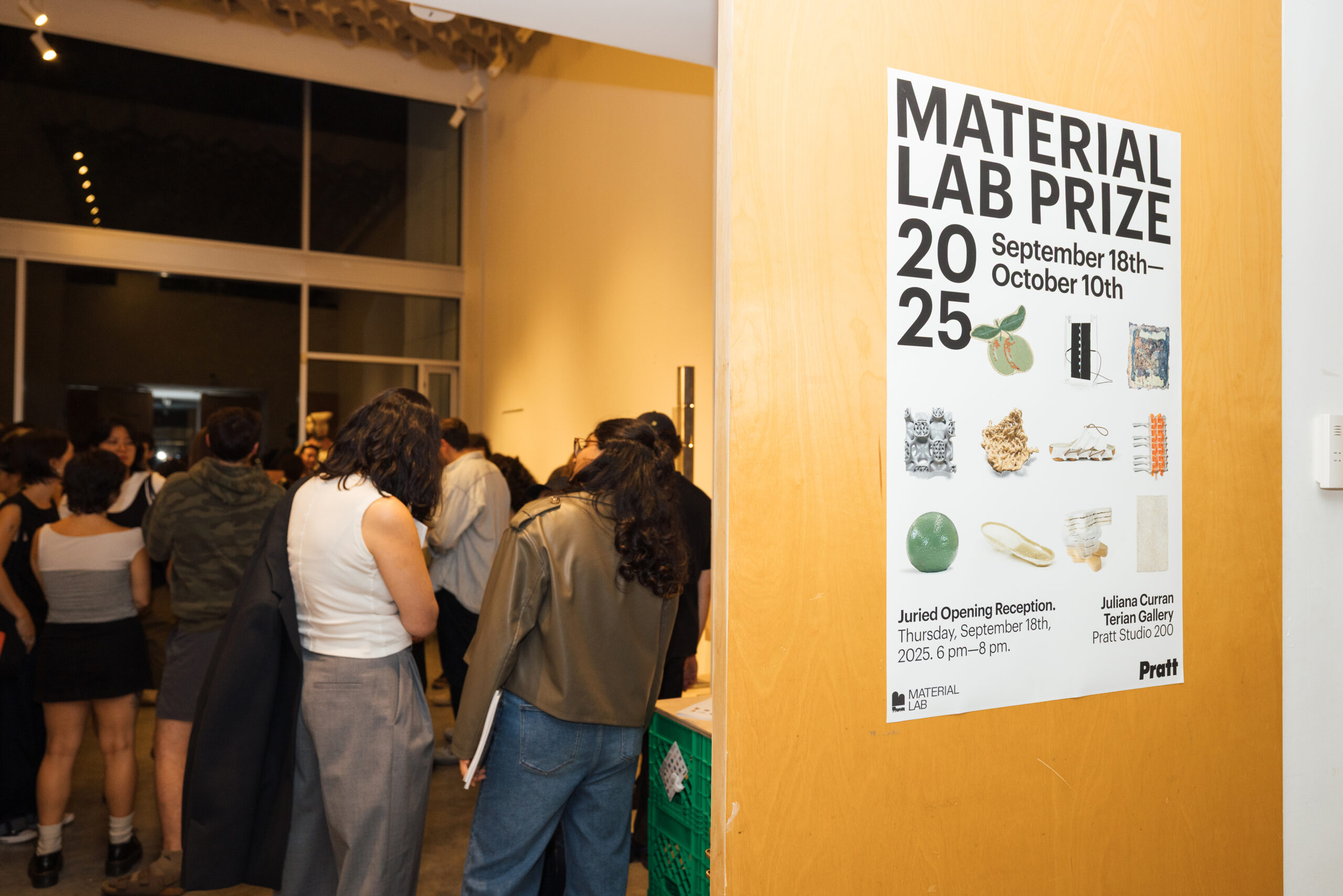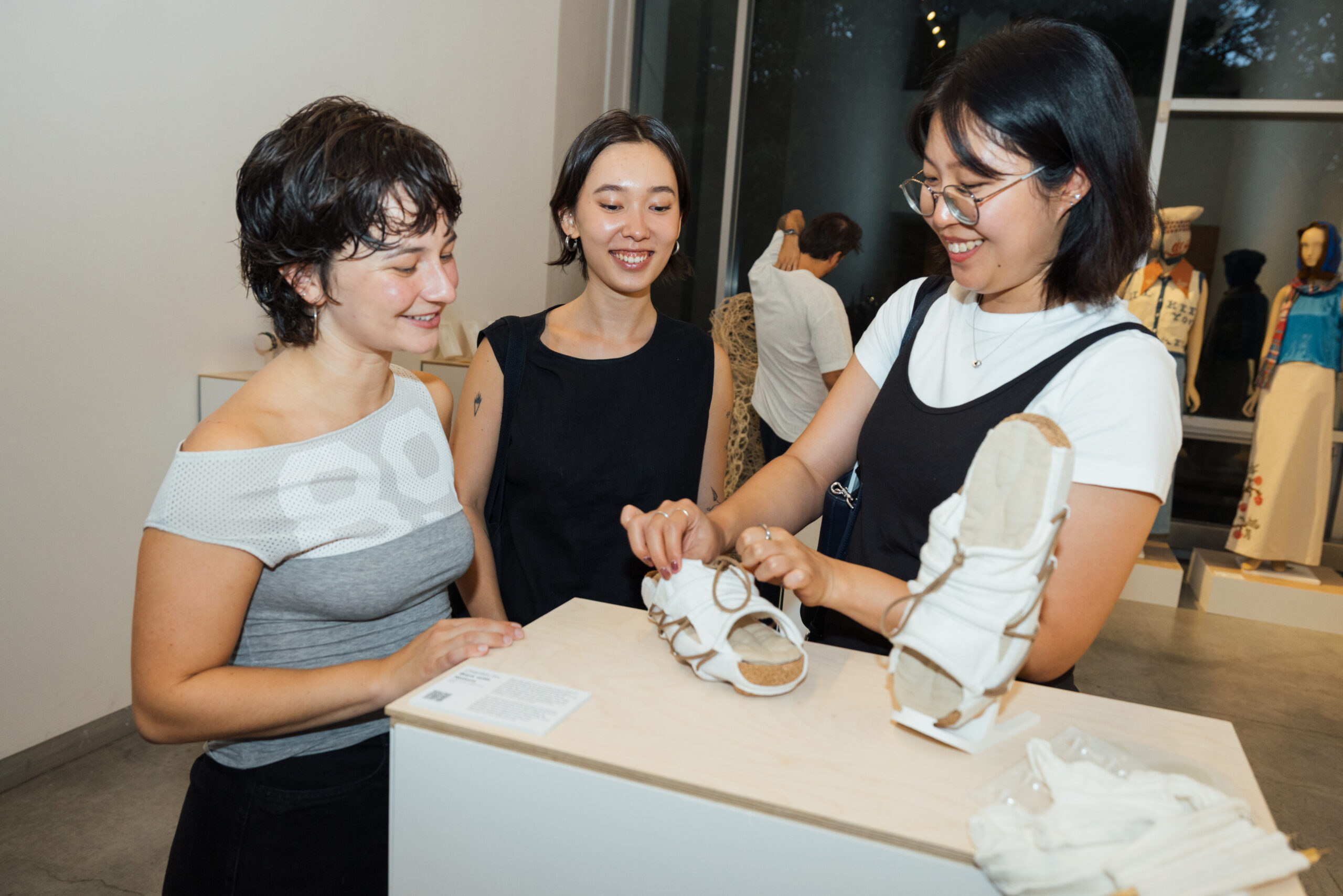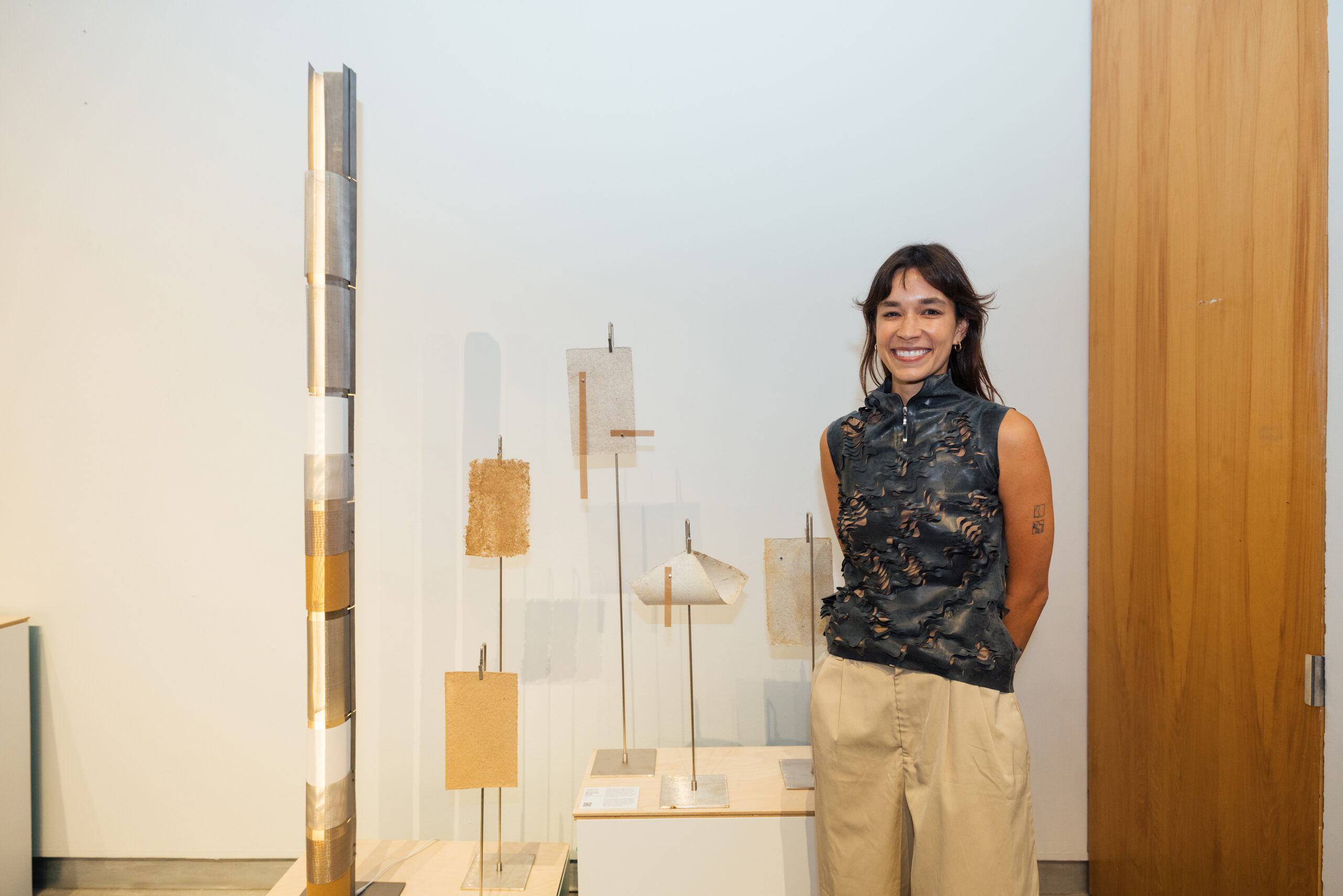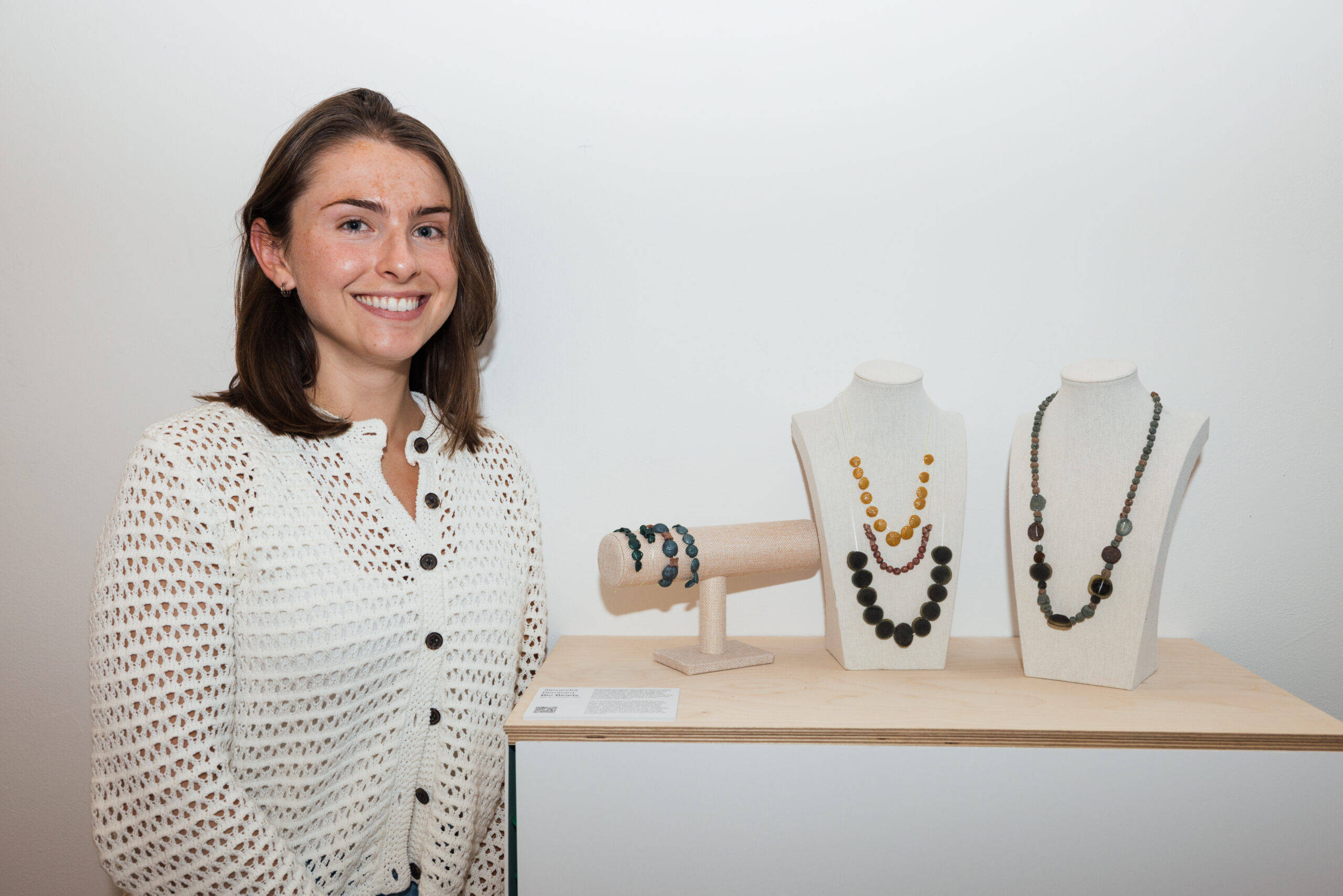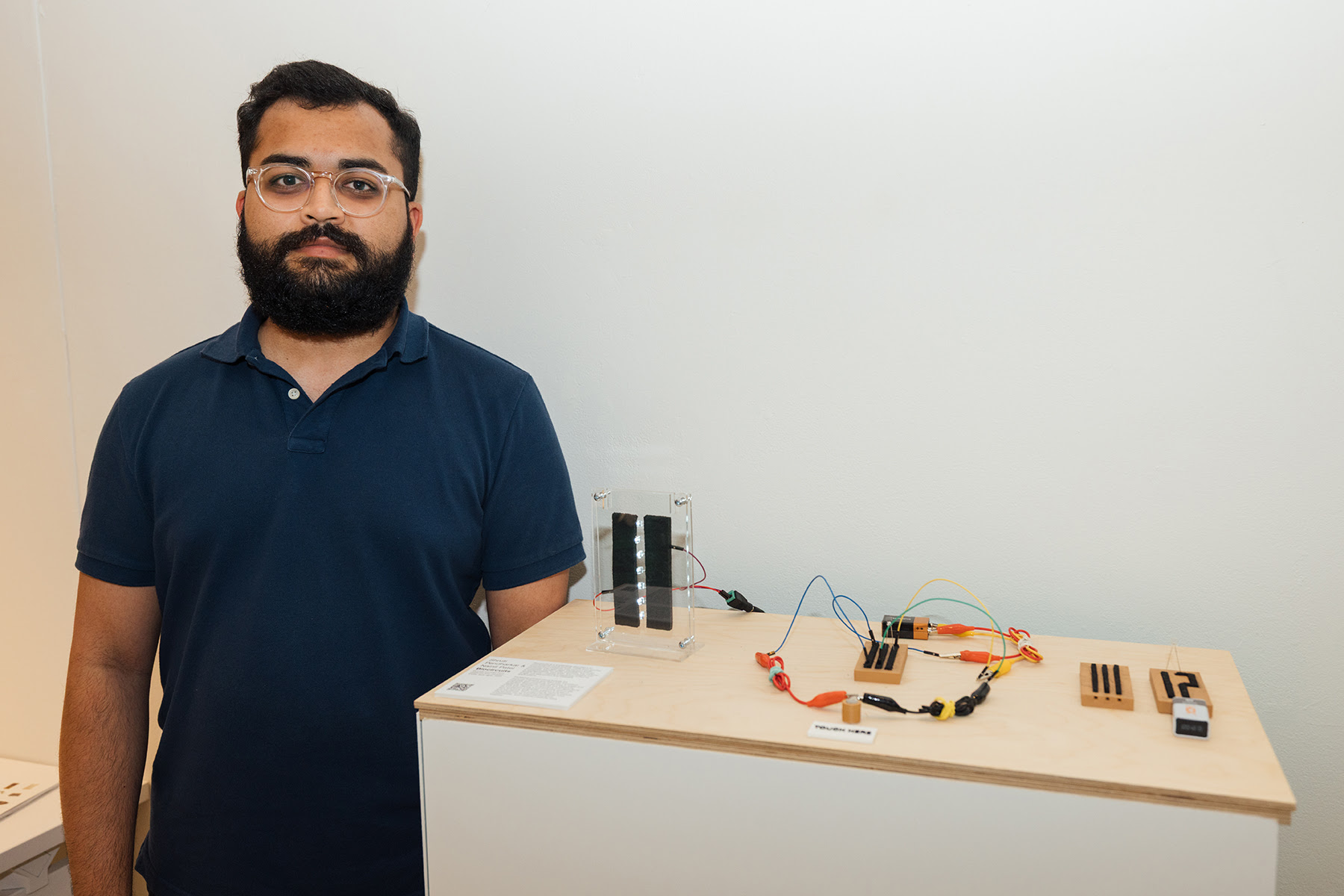As e-waste surges by millions of metric tons each year, innovators are searching for sustainable alternatives to everyday electronics.
Nainil Patel and Shruti Pendharkar, both MID ’25, developed a biodegradable alternative to traditional circuit boards, which generally include toxic, nonrecyclable materials. Experimenting with produce waste, the duo combined coconut and pistachio shells with agar-agar to create an organic material that can be molded into various forms. While traditional circuit boards often end up in landfills, Biocircuits can be composted at the end of their lifecycle, nourishing soil and promoting plant growth.
Biocircuits received first place in Pratt’s 2025 Material Lab Prize and earned recognition from this year’s jury for the iterative experimentation that Patel and Pendharkar closely documented and the material’s ability to adapt to emerging needs.
“I think the project’s continued success can be attributed to the hardworking students who help organize it: Jo Barnett and Kelsey Kiantoro, both incredibly thoughtful and talented designers themselves,” said Jay Lemire, director of production/labs and material research in the School of Design. “This year’s exhibition would not have come together without their dedication and ingenuity.”
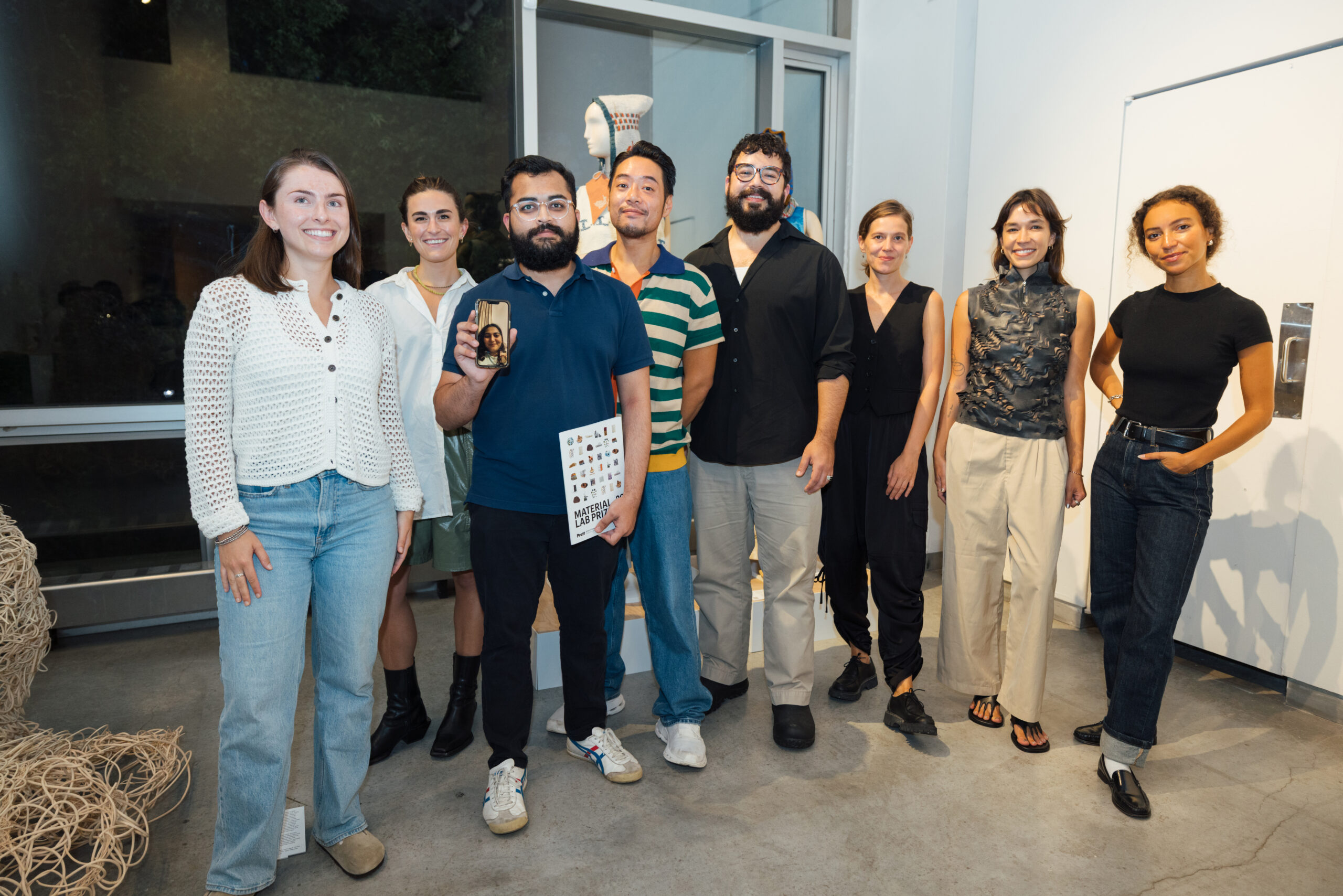
The Material Lab is a collaborative research center within the School of Design that houses more than 25,000 unique material samples for students to build speculative material palettes and refine their material literacy. The Lab hosts programming to help students better understand the characteristics, composition, application, and impact of materials. The annual Material Lab Prize was established to recognize and bring together interdisciplinary, material-driven student work, with a focus on material experimentation.
This year’s jury consisted of artist and chef Edward Cabral; architect and designer Kamilla Csegzi; object maker Heechan Kim; designer and environmental activist Lauryn Menard; and architect, designer, and educator Kim Mupangilaï.
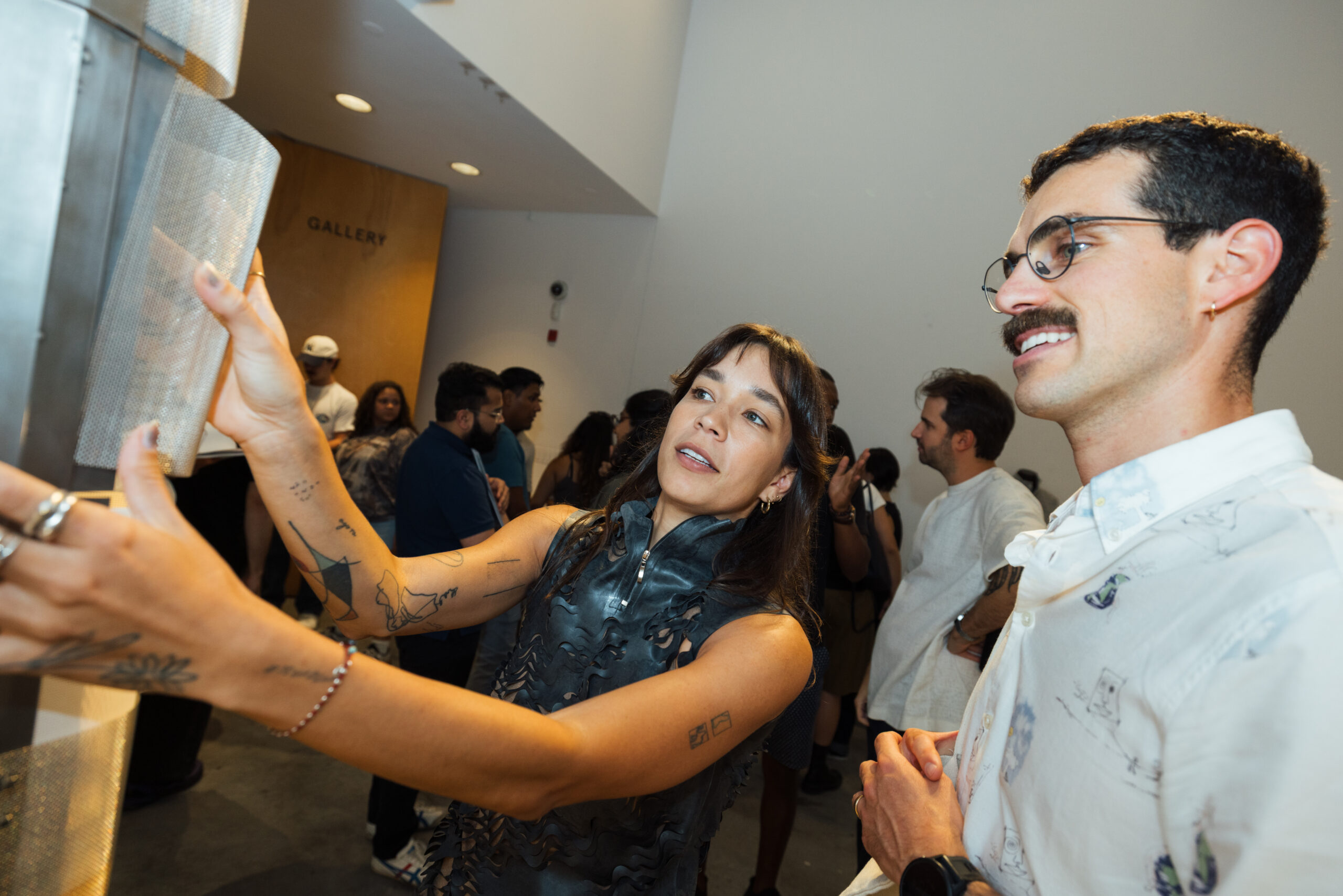
In addition to awarding a prize recipient, the jury recognized two projects with honorable mentions. Magnetic Dust, by Gabriela Mestriner, MID ’26, transforms steel dust—a byproduct of metal fabrication—into handmade papers with subtle magnetic properties. Using material collected from Pratt’s Production Labs, blended with recycled pulp, the sheets develop rust-colored tones through natural oxidation, resulting in papers that are both flexible and durable. Jurors commended the project for its playfulness and the sense of serendipity embedded in its discovery process.
The other honorable mention went to Alexandra Bernhard, MID ’26, for her project BioBeads, which reimagines festival beads using biodegradable materials as a sustainable alternative to the single-use plastics common at events like Mardi Gras. Made from chitosan and agar, the colorful and durable beads mimic the look and feel of traditional versions while remaining compostable at end-of-life. The project stood out for its intricacy, creativity, and engaging textures, offering a fun and inventive solution with potential for further exploration.
